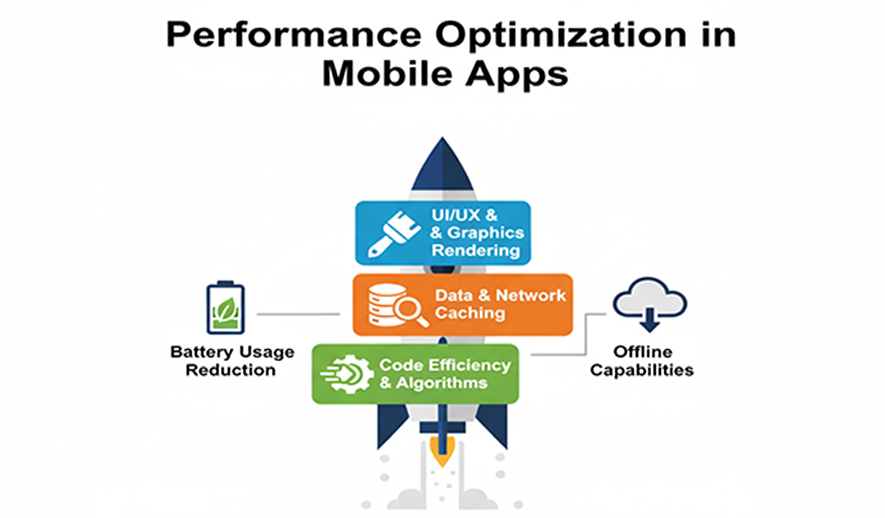
Performance Optimization in Mobile Apps
Optimizing a mobile app's performance requires a multifaceted approach focused on efficiency, speed, and resource management. A slow, unresponsive, or battery-draining app can lead to user frustration, negative reviews, and uninstalls.
Code and development practices
- Use efficient algorithms and data structures: Write clean and efficient code. A poor algorithm, like a linear search on a large dataset, is much slower than an optimized one.
- Leverage asynchronous programming: Offload heavy computations and network requests from the main thread using techniques like Coroutines (Android) or Executors. This prevents the UI from freezing and improves responsiveness.
- Optimize app startup time: Only initialize components and load data critical for the initial screen. Use splash screens wisely and avoid unnecessary tasks during the app's launch process.
- Employ modern architecture patterns: Use architectural patterns like MVC, MVP, or MVVM to create a more scalable app with better separation of concerns.
- Reduce code complexity: Simple, modular code is faster to process and easier to maintain. Avoid deep view hierarchies in your layouts, as they increase rendering time.
Resource management
- Optimize images and media: Use modern, compressed formats like WebP or AVIF instead of PNG or JPEG. Implement lazy loading to load images only when they become visible on the screen.
- Minimize app size: A smaller app is easier and faster for users to download. Remove unused code and assets, use dynamic feature delivery (Android), and take advantage of app-thinning (iOS) to ensure users only download what they need.
- Manage memory and prevent leaks: Monitor memory usage using built-in profiling tools like Android Profiler or Xcode Instruments. Address any leaks promptly to prevent crashes and lagging.
- Optimize battery consumption: Minimize background processes and limit the use of services like GPS. Schedule background tasks efficiently using platform-specific APIs like WorkManager (Android) or Background Tasks (iOS).
Network and data efficiency
- Implement effective caching strategies: Store frequently accessed data locally to reduce the number of network requests and improve load times.
- Batch API requests: Group multiple related requests into a single API call to reduce latency and server overhead.
- Optimize API payloads: Ensure you are only fetching the data you need from your servers. Tools like GraphQL can help minimize data transfer.
- Support offline capabilities: Provide an offline mode that allows the app to function with cached data during poor or no network connectivity.
- Use a Content Delivery Network (CDN): A CDN delivers static content from a server closer to the user, reducing latency and speeding up asset loading.
Monitoring and testing
- Conduct regular performance testing: Throughout development, perform performance tests to identify bottlenecks. Test across a range of devices, OS versions, and network conditions.
- Use real-time monitoring tools: Implement tools like Firebase Performance Monitoring, Sentry, or Crashlytics to monitor your app's performance and crash rate in the wild.
- Analyze user feedback: Pay attention to user reviews and bug reports related to performance issues to address them proactively.
